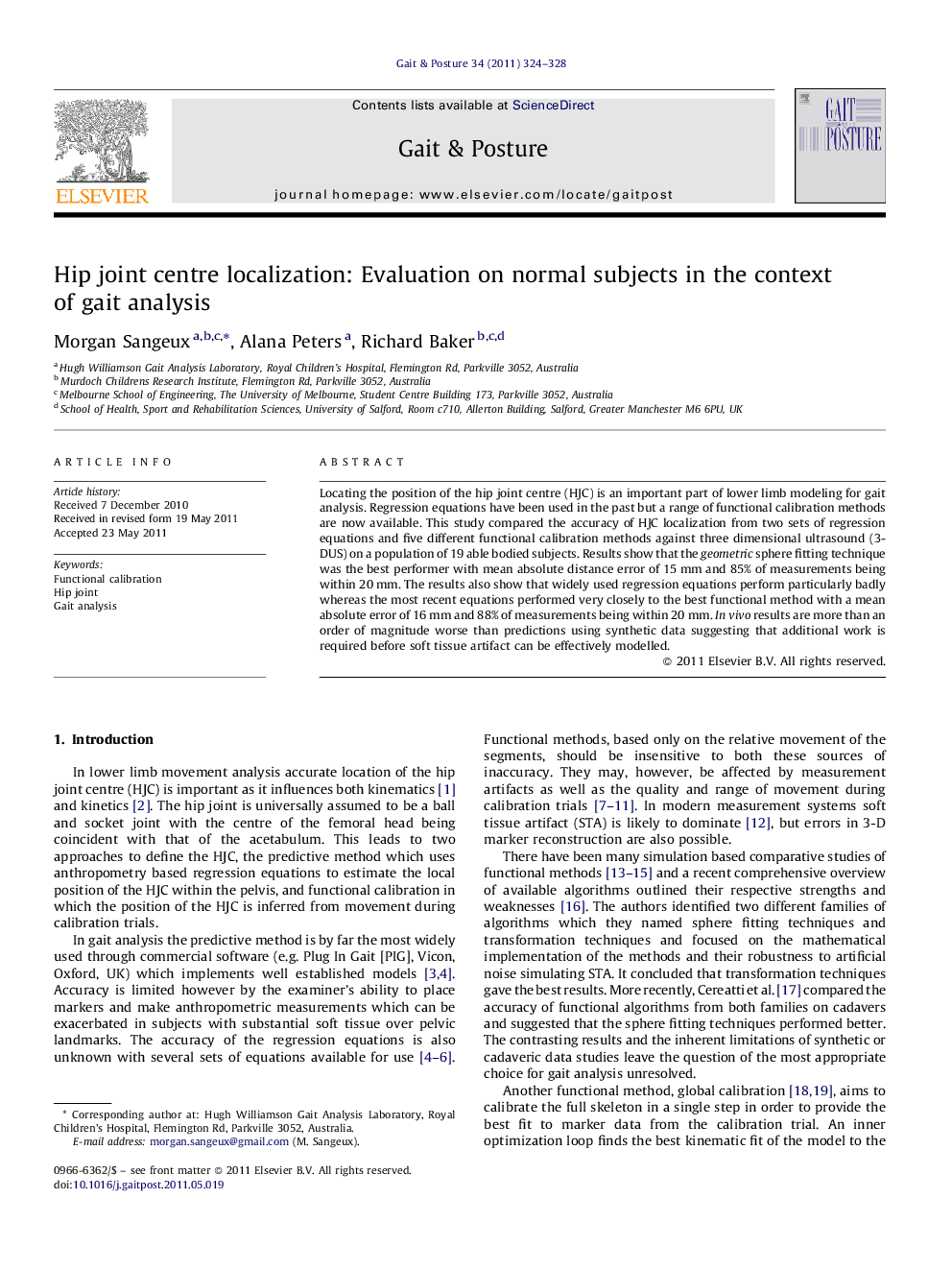| Article ID | Journal | Published Year | Pages | File Type |
|---|---|---|---|---|
| 6208169 | Gait & Posture | 2011 | 5 Pages |
Locating the position of the hip joint centre (HJC) is an important part of lower limb modeling for gait analysis. Regression equations have been used in the past but a range of functional calibration methods are now available. This study compared the accuracy of HJC localization from two sets of regression equations and five different functional calibration methods against three dimensional ultrasound (3-DUS) on a population of 19 able bodied subjects. Results show that the geometric sphere fitting technique was the best performer with mean absolute distance error of 15Â mm and 85% of measurements being within 20Â mm. The results also show that widely used regression equations perform particularly badly whereas the most recent equations performed very closely to the best functional method with a mean absolute error of 16Â mm and 88% of measurements being within 20Â mm. In vivo results are more than an order of magnitude worse than predictions using synthetic data suggesting that additional work is required before soft tissue artifact can be effectively modelled.
⺠We evaluate different models to locate the hip joint centre in gait analysis. ⺠Functional and predictive models were compared against 3D ultrasound measurements. ⺠Sphere fitting functional models were the most accurate, 15(5) mm. ⺠The latest predictive model provided almost as accurate results, 16(6) mm.
